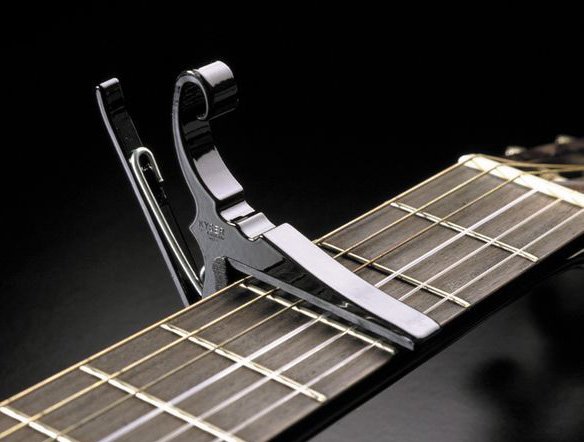

The same style of capo may be sold in different sizes and shapes for different instruments and fretboard curvatures. In small pieces, this might be the same thing as a repeat. There are numerous styles of capos, but most commercial capos consist of a rubber-covered bar that holds down the strings of the instrument and is clamped to the instrument by one of a number of mechanisms. The term is a directive to repeat the previous part of music, often used to save space, and thus is an easier way of saying to repeat the music from the beginning. In effect, a capo uses a fret of an instrument to create a new nut at a higher note than the instrument's actual nut. Catalan (Cap): from cap capon a nickname for an ineffectual man or a metonymic occupational name for a dealer in capons. The capo is most commonly used to raise the pitch of a fretted instrument so that a player can perform a piece in a certain key using different fingerings to what they would use if played "open". The first patented capo was designed by James Ashborn of Walcottville, Connecticut, USA. Giovanni Battista Doni first used the term in his Annotazioni of 1640, though capo use likely began earlier in the 17th-century.


It is frequently used on guitars, mandolins, and banjos. A movable bar placed across the fingerboard of a guitar used to raise the pitch of all strings. a clamp fastened across all the strings of a fretted musical instrument to raise their tuning by a chosen amount. A movable bar placed across the fingerboard of a guitar used to raise the pitch of all strings: A leader. Freebase (0.00 / 0 votes) Rate this definition:Ī capo is a device used on the neck of a stringed instrument to shorten the playable length of the strings, hence raising the pitch. Definition of capo in English English dictionary.


 0 kommentar(er)
0 kommentar(er)
